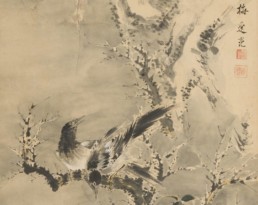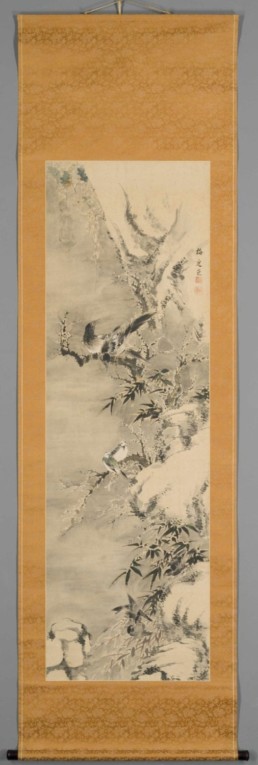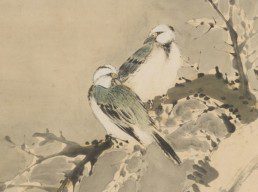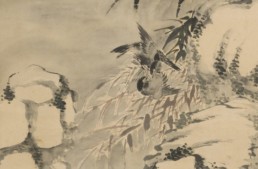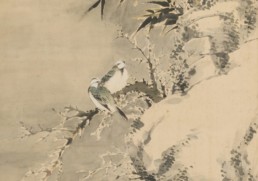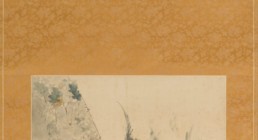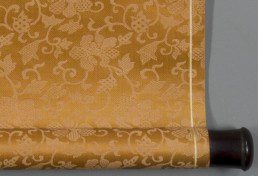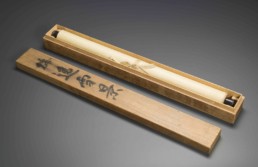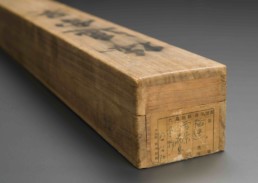[Birds in Snowscape] by Yamamoto Baiitsu (1783 – 1858)
Artist:Yamamoto Baiitsu (1783 - 1858)Era:EdoPrice:SoldInquire:info@shirakuragallery.com
This tranquil winter scene showing a group of birds taking shelter in the snowy boughs of a tree was done by well-known Edo painter, poet, and tea ceremony devotee—Baiitsu Yamamoto.
A native of Nagoya, a bustling Japanese center for shipping and trade in Late Edo, Baiitsu was heavily influenced by works of Chinese art, especially the naturalistic landscapes that made their way into Japan through this port city. Over time he came to paint almost exclusively birds in various landscapes and gained a reputation for his brushwork, exceptional attention to detail, and as he termed it the “spirit” he imbued in a completed work. With his growing reputation came new opportunity and in 1832 he moved to Kyoto where for a time he enjoyed great success. Eventually however, his success attracted the attention of rival factions and, out of jealousy perhaps, they set out to ruin his reputation, forcing him to return to his home in Nagoya. Despite this setback, Baiitsu went on to attract many talented students and paint many masterpieces in the city that first brought him fortune and fame. Today he is a favorite of art-lovers and collectors around the world and his works are held by museums such as the MET, the Fuji Art Museum, and the British Museum—to name a few.
Sumi and color on Japnanese paper with a silk border, this generously proportioned hanging scroll is 210cm tall and 61.5cm wide. The artwork on the scroll is 146cm tall and 46cm wide and is signed by the artist (examples of Yamamoto’s signature and seals available upon request). In very good condition, it comes with its original period wood box inscribed with the words, “Baiitsu Sekkei” (Winter scene by Baiitsu).
Additional Resources:
https://www.metmuseum.org/art/collection/search/49027
https://www.fujibi.or.jp/en/our-collection/profile-of-works.html?work_id=6597
